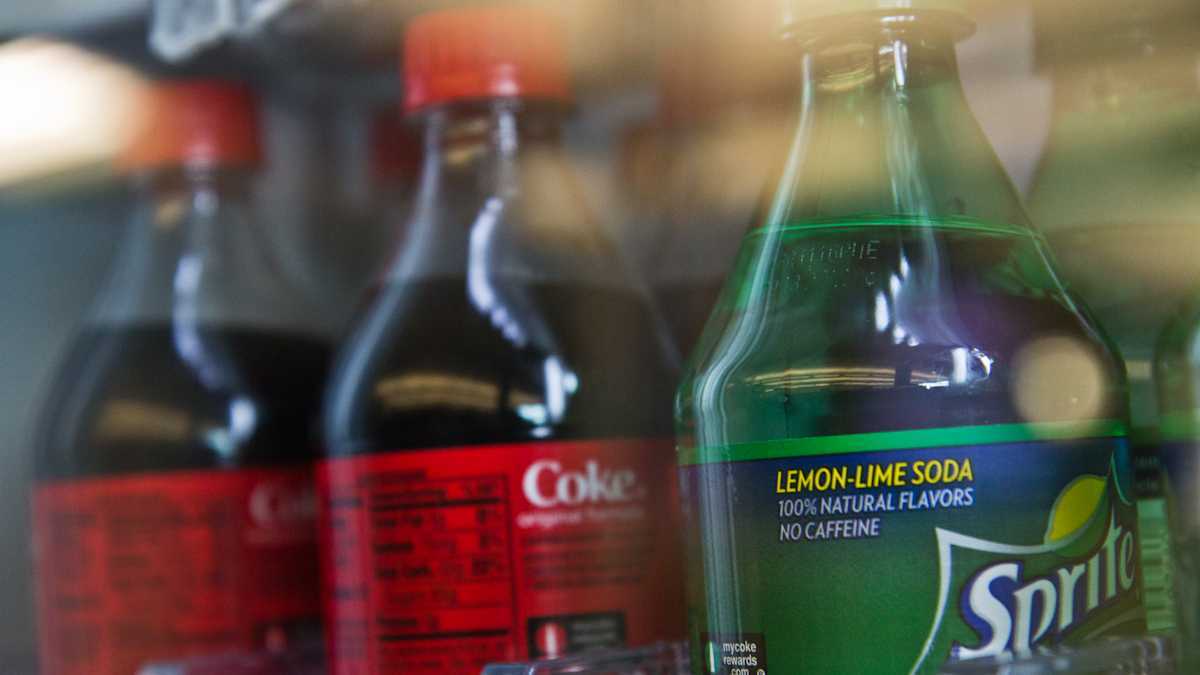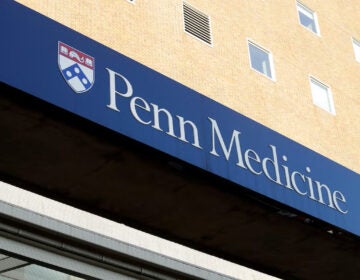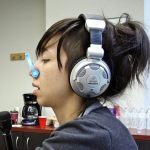Do soda taxes help or hurt the poor?
Supporters say taxing sugary drinks is a boon for public health — detractors say the levy is a menace for low-income communities. Who’s right?
Listen 9:13
(Kimberly Paynter/WHYY)
It’s around noon on a Monday, and inside Medina Food Market in Philadelphia, the lunch rush is just getting started. Customers trickle in and out, picking up bags of chips and ordering sandwiches from the deli.
Even so, owner Eduard Medina looks worried.
“The store is slow now — very slow,” he says.
Medina says it’s been that way ever since Philadelphia passed its controversial soda tax, which bumped up prices on sweetened drinks by 1.5 cents per ounce. In real terms, that’s meant increases ranging from 18 cents for a can of soda, to nearly $2 for gallon jugs of iced tea.
Those bumps have added up for Medina’s customers, too.
“Yeah I noticed it — that’s why I don’t buy it that often,” says customer Erica Burgess, as she pays for a bottle of Sprite, and another of Coke.
Burgess says soda is a relatively rare treat for her these days. Before the tax, she used to drink soda every day — but not anymore.
“Yes, a lot less,” she says. “I’d say maybe once a month anymore? And that’s all we’ll have.”
Medina’s store is located along the eastern edge of North Philadelphia, which, according to health department data, boasts the highest percentage of daily soda drinkers in the city. It’s also one of the poorest neighborhoods in Philadelphia, which means that customers are especially price conscious.
One of Medina’s drink suppliers — an iced tea distributor named Issam Latif — says he’s seen sales plummet inside Philadelphia, and rise just past the city limits.
“It’s hurting the small guys,” he says. “They are not making money. Why? Because the customers, they go buy outside Philadelphia, and these guys, the store owners, are losing money.”
As a growing number of cities consider their own soda taxes, the impact on low-income neighborhoods like North Philadelphia has become a topic of national debate. While supporters of the tax call it an important new weapon in the fight against obesity — which is epidemic in poorer neighborhoods — opponents have argued that it places an outsized financial burden on the same communities they’re meant to help.
On one side of the debate is the powerful American Beverage Association, an industry group that recently challenged the tax in Pennsylvania’s Supreme Court. On the other is the government of Philadelphia.
The poverty-soda link
Among the champions of Philadelphia’s soda tax is Cheryl Bettigole, who heads up chronic disease prevention at the city’s health department.
Although Bettigole says the tax’s main purpose is raising money for a new universal pre-K program, she says its potential health benefits are important — especially considering the stakes.
“I love Philadelphia — but we are rock bottom for health, and we have been for a very long time,” she says. “If you look at the 10 biggest cities in the United States, we have the highest rate of obesity. We have the highest rate of smoking. We have the highest rate of early deaths from heart disease, and the highest rate of early mortality overall.”
Bettigole says that has a lot to do Philadelphia’s status as the poorest big city in the country.
“The biggest factor linked to whether someone is likely to become healthy or to have chronic conditions that lead to early death and disability is poverty,” she says. “I mean, it is the core reason for those outcomes.”
Research has shown that obesity and weight-related diseases are more prevalent in low-income communities, thanks to a lack of healthy food options, decreased opportunities for physical activity, and limited access to health care.
Bettigole says another factor is what she calls “predatory marketing” by companies that produce junk food and sugary drinks.
“We see a great deal of advertising in low-income neighborhoods really targeting teens and children, which we don’t see at all in our wealthier areas,” she says.
That’s backed up by several studies, including a recent one by a team of researchers from Harvard University, the University of Pennsylvania, and the New York State Department of Health, which shows that soda ads spike on the days that food stamp benefits are distributed.
Bettigole says the chronic stress associated with poverty compounds the impact of these ads, by making people more vulnerable to the lure of unhealthy treats.
“You know, you might decide in the morning that you’re not going to have a soda today, but by the time it’s three o’clock, and you’re tired and hungry, and you’ve seen 27 ads for soda and they’re all looking really attractive — you might grab a soda,” she says.
Early results
Cheryl Bettigole says Philadelphia’s soda tax could disrupt that cycle, adding that it already seems to be making a difference.
“What we’re seeing so far, and it’s very early days in terms of the data, looks really good,” she says. “When I talk to friends who see patients in inner-city neighborhoods, they’re also describing a dramatic drop in sweetened drink consumption.”
That’s supported by a recently published study on the short-term effects of the tax. According to a survey conducted in the first two months after it was instituted, Philadelphians were 40 percent less likely to drink soda on a daily basis, and more likely to drink bottled water. In nearby cities like Trenton and Camden, researchers noted no change in soda consumption.
“Our findings are in general consistent with tax studies in Berkeley, California, and Mexico,” says lead author Yichen Zhong. “They also observed a decrease in soda consumption and the magnitude similar to what we observed.”
Zhong says she and her colleagues are currently crunching a new set of numbers to see whether Philadelphia initial decline has stayed steady.
Though data is limited, it’s already got some public health experts excited.
“The early evidence coming out from the city is very promising and very encouraging,” says David Sarwer, head of the Center for Obesity Research and Education at Temple University in Philadelphia. “And it runs parallel to what we’re seeing in other major urban areas around the country and around the world — that moving to taxing high-sugar, high-fat beverages and foods can promote change at the population level.”
Sarwer says that’s especially important given the scale of America’s obesity epidemic — and the role that sugary drinks have played in its growth.
“The amount of sugar that we see in a regular soda is really staggering,” Sarwer says. “And we don’t think about it in terms of being the quantity that it really is.”
For example, a 20-ounce bottle of orange soda contains roughly 72 grams of sugar, which is equal to about three Snickers bars (the size stores sell near cash registers — not the fun size). But Sarwer says most people don’t think of it that way.
“We tend to focus on the calories in what we’re eating, but not on what we’re drinking,” he says. “But in fact, those beverages in and of themselves can be causing people to gain significant amounts of weight in a relatively short period of time.”
Research connecting sugary beverages with obesity dates back more than two decades, but it’s only recently that studies have drawn a more definitive link.
Studies released in 2010 and 2011 revealed that sugary beverages are the single largest contributor of calories and added sugars in the American diet. More recent work has pinpointed soda as a likely leading contributor to childhood obesity, along with diabetes, insulin resistance, and heart disease.
“Soda has become something that’s gone from being an occasional treat to something people consume all day long,” says public health official Cheryl Bettigole. “And that constant sugar in the bloodstream drives insulin production in the pancreas, which makes people hungrier, makes them gain weight, and makes it really hard not to keep drinking that same sugar.”
Industry pushback
Opponents of the soda tax say that sugary beverages are being unfairly scapegoated. Among them is the Coalition to Stop Local Food and Beverage Taxes, which includes local business and food industry groups, along with the American Beverage Association.
“The percentage of sugary beverage sales is actually decreasing nationally, even as the obesity rate is increasing,” says coalition spokesman Anthony Campisi. “We’re talking about a really complicated public health problem that you want to sort of take a sledgehammer to as opposed to something that’s more sort of finely crafted.”
For example, Campisi says a study commissioned by the American Beverage Association
Campisi found that the effects of that sledgehammer approach have been economically disastrous — particularly for low-income areas.
“It’s cost nearly 1,200 local jobs,” he says. “It’s devastating supermarkets, corner stores and bodegas, particularly in, in poor neighborhoods in the city.”
While the study hasn’t been peer-reviewed, Campisi says its findings match up with reports from local store owners like Eduard Medina of customers venturing outside the city limits to do their shopping.
“We found a big migration of customers leaving city supermarkets to go out to the suburbs to avoid this tax,” he said. “And they weren’t just, you know, let’s say buying their Arizona ice tea out in the suburbs. They were also buying their milk and their yogurt and their bread and their frozen vegetables.”
He says that’s led to major financial losses that could even end up shutting down local grocery stores.
“Philadelphia, which was sort of on the vanguard of tackling the problem of food deserts, has now made running a supermarket in a poor neighborhood in Philadelphia uneconomical, right?” he says. “And that, over the long term, has to have a negative public health impact if there’s no place to buy fresh fruits and vegetables and all the other things that a supermarket provides.”
City public health official Cheryl Bettigole challenges the job loss claim.
“The industry has been putting out lots of reports that jobs are being lost, but the jobs data and the wage tax data do not show that,” she says. “Jobs in the beverage industry and in the grocery industry have in fact gone up, as has the wage tax.”
Bettigole is referring to city data showing an increase in the amount of wage taxes collected from people working beverage-related jobs. Opponents of the tax argue that that data isn’t detailed enough to be meaningful, because it’s unclear whether those taxes were collected from people working in the city, or residents with jobs outside Philadelphia.
As that debate continues, Bettigole says there’s an upside to the beverage industry’s multimillion-dollar public relations offensive — it’s keeping the conversation going in a very public way, which, in turn, is helping spread the message about concerns over the health effects of soda.
“It is the single most effective public-health campaign I have ever seen,” Bettigole says.
WHYY is your source for fact-based, in-depth journalism and information. As a nonprofit organization, we rely on financial support from readers like you. Please give today.







